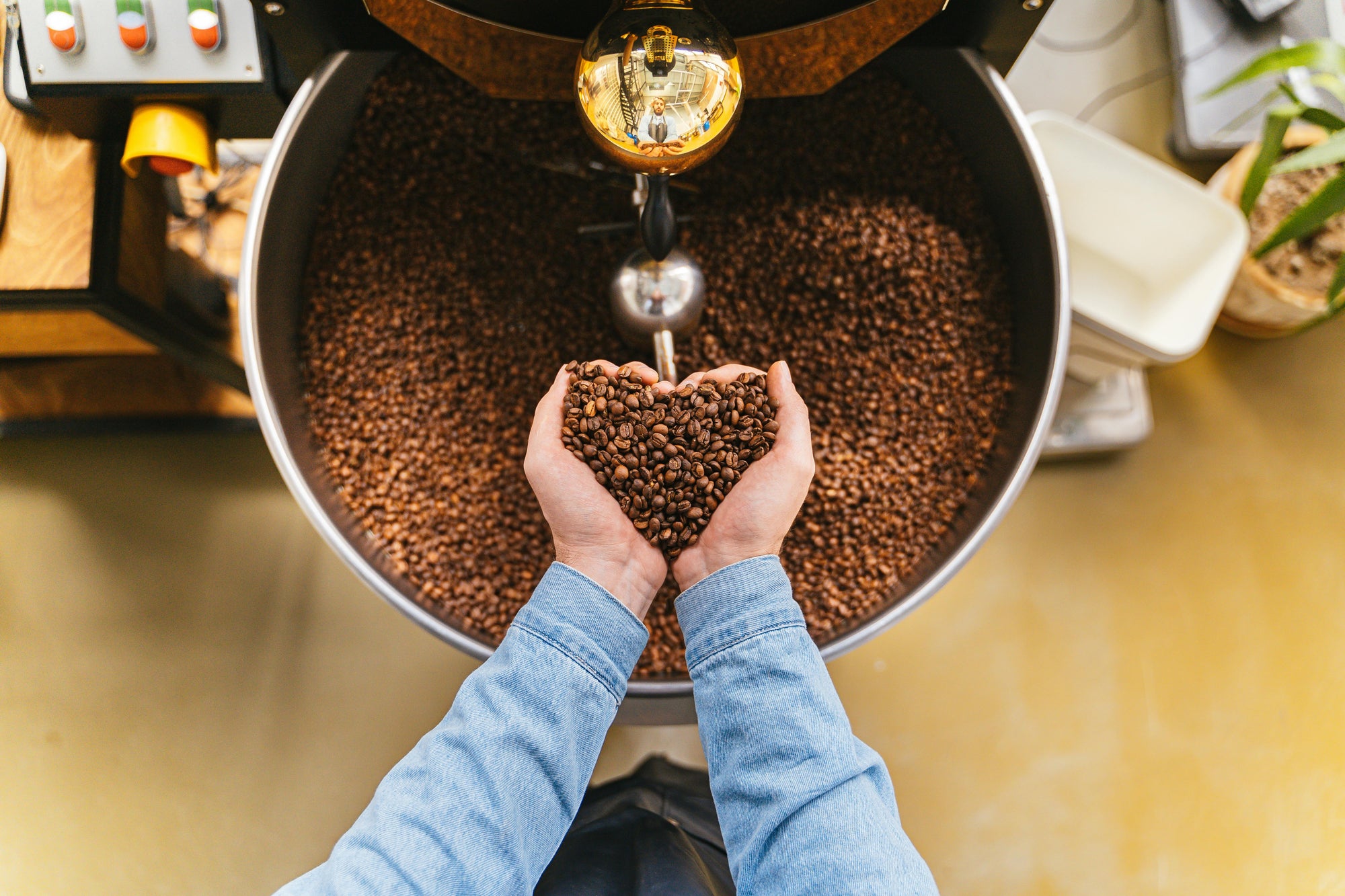

The 15-15-15 Rule in Coffee: What It Means and Why Freshness Matters
At Podium, we don't believe that fresh coffee is a luxury — it’s the difference between a cup that sings with vibrant flavor and one that tastes flat, dull, or bitter. In the specialty coffee world, you’ll often hear a simple rule of thumb for remembering when coffee is at its best: the 15-15-15 rule.
If you care about drinking coffee the way it was meant to taste — bursting with complexity — this rule matters.
In this article, we’ll unpack the 15-15-15 rule, explain the science behind it, and show you how to apply it at home. And, because we’re Podium Coffee Club, we’ll also explain how our award-winning roasters set you up with coffee that’s always in the freshness sweet spot.
What Is the 15-15-15 Rule in Coffee?
The 15-15-15 rule is a freshness guideline for coffee lovers. Here’s what each “15” stands for:
-
15 months — Green coffee (the raw, unroasted bean) should ideally be roasted within 15 months of harvest. Beyond that, it begins to lose vibrancy, sweetness, and aromatic complexity.
-
15 days — Once roasted, coffee is at its best within about 15 days. That’s when you’ll taste the full spectrum of flavors the roaster intended — fruit notes, floral aromatics, chocolatey depth, whatever the bean has to offer.
-
15 minutes — After grinding, coffee should be brewed within 15 minutes. Ground coffee oxidizes extremely fast, and flavor compounds dissipate almost instantly once exposed to air.
In short: coffee is always on the clock.
The Science Behind the Rule
The 15-15-15 rule isn’t just a marketing trick — it’s grounded in how coffee changes chemically at each stage.
1. Green Coffee: 15 Months
Green coffee beans are like any agricultural product: they age. Over time, the natural sugars, acids, and aromatic compounds break down. Good storage (cool, dry, stable conditions, sometimes even vacuum-sealed or nitrogen-flushed) can stretch green coffee’s lifespan, but even under ideal conditions, the magic fades after about 15 months.
2. Roasted Coffee: 15 Days
Roasting kicks coffee’s chemical activity into overdrive. It creates hundreds of flavor compounds, but those compounds also start degrading the moment the beans cool. Aromatics escape. Oils oxidize. Sweetness dulls.
-
Most filter coffees shine in the first 2 weeks after roast. Many people, including the team here at Podium, also freshly roasted coffee needs a few days to degas to reach its peak too.
3. Ground Coffee: 15 Minutes
Grinding is like hitting the fast-forward button on staling. Why? Surface area. Whole beans are relatively stable, but once you grind, you expose all those flavor compounds to oxygen at once. Studies have shown that up to 60% of aromatics can be lost within 15 minutes of grinding. That’s why pre-ground coffee almost always tastes flat compared to fresh-ground beans. Here's looking at you supermarket-coffee!
When the Rule Breaks Down
The 15-15-15 rule is a great starting point, but like any rule, there are exceptions.
-
Dark roasts vs. light roasts: Darker roasts sometimes taste best a little earlier (day 5–10), while some lighter roasts can keep their sparkle past day 20.
-
Origin and processing: Naturally processed coffees may taste lively longer, while delicate washed coffees fade faster.
-
Brew method: Espresso often peaks later than drip or pour-over, since it requires more degassing for a smooth shot.
-
Storage quality: Vacuum-sealed, nitrogen-flushed bags with one-way valves can extend roasted coffee freshness beyond 15 days.
So think of the 15-15-15 rule as a guideline, not gospel. The spirit of the rule is more important than the exact numbers: coffee is best enjoyed fresh, not neglected in the back of a cupboard.
How Specialty Roasters Think About Freshness
Award-winning roasters — the kind Podium Coffee Club partners with — know that freshness isn’t optional. It’s part of the craft. Here’s how they beat the odds of staling:
-
Careful green coffee storage: Temperature- and humidity-controlled warehouses keep unroasted beans vibrant well beyond the bare minimum.
-
Fast roasting-to-shipping cycles: Great roasters don’t roast coffee months in advance and let it sit. They roast in small batches and move it quickly (Podium ships within 24 hours of roasting).
-
Nitrogen flushing & one-way valves: Many use high-end packaging that pushes oxygen out and slows staling.
-
Constant tasting: Roasters cup their coffee regularly to make sure it’s hitting the flavor profile they want to showcase.
In short: the 15-15-15 rule sets a baseline, but top roasters work tirelessly to push quality past those numbers.
How to Apply the 15-15-15 Rule at Home
So how do you make sure you’re living by the 15-15-15 rule at home? Here are some practical steps:
-
Buy smaller amounts — Instead of stockpiling a month’s worth, order coffee more often in smaller quantities.
-
Check the roast date — Always look for a roast date on the bag, not just a “best by” date. If it doesn’t have one, that’s a red flag.
-
Grind fresh — Invest in a good burr grinder. It’s the single biggest upgrade you can make to your coffee setup.
-
Store it right — Keep beans in a cool, dry place in their original bag (sealed tight) or in a vacuum-sealed container. Avoid the fridge and freezer unless you’re storing for weeks.
-
Dial in your timing — Brew filter coffee within 15 days of roast. For espresso, aim for 7–21 days depending on the beans.
Follow these, and you’ll start tasting the difference.
How Podium Coffee Club Fits In
At Podium Coffee Club, freshness isn’t something you have to stress about — it’s built into everything we do.
-
Every coffee we ship comes from a roaster who has stood on the podium at a major U.S. coffee competition. These are the best of the best.
-
Coffees are shipped within 24 hours of roasting, so they arrive in that magical sweet spot of 7–15 days after roasting.
-
You’ll never play the “coffee lottery” again, wondering if the beans you bought at a supermarket have been sitting for months. With Podium, every cup is championship-level fresh.
It’s not just coffee. It’s the assurance that every bag you open is living proof of what great coffee should taste like.
Conclusion
The 15-15-15 rule is simple, memorable, and worth following:
-
Roast green beans within 15 months of harvest.
-
Brew roasted beans within 15 days of roasting.
-
Brew ground coffee within 15 minutes of grinding.
Coffee is best enjoyed as a fleeting product — its beauty is in the fact that it doesn’t last forever. But if you pay attention to freshness, you’ll taste coffee at its absolute best. And if you don’t want to worry about the details? That’s exactly why Podium Coffee Club exists: to put world-class, competition-roasted coffee in your hands at peak freshness, month after month.
FAQs About Coffee Freshness
What is the 15-15-15 rule in coffee?
It’s a freshness guideline: roast green beans within 15 months, drink roasted beans within 15 days, and brew ground coffee within 15 minutes.
How long does coffee stay fresh after roasting?
Most coffees taste their best in the first 7–15 days after roasting, though espresso blends may peak closer to 10–21 days.
Does ground coffee really go stale after 15 minutes?
Yes — ground coffee loses a large percentage of its aromatics within minutes of grinding. That’s why fresh grinding is so important.
Can I freeze coffee to extend freshness?
Yes, but it must be done correctly (airtight bags, portioned in advance). For everyday use, storing coffee in its original bag or a vacuum-sealed canister at room temperature is usually better.




